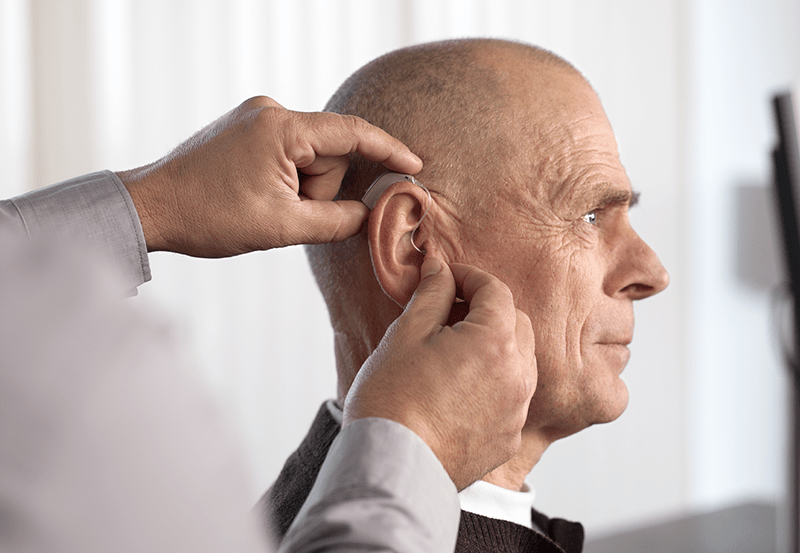Individuals with only mild to moderate hearing loss often respond best to open-fit hearing aids. Due to the high amount of amplification required in situations of severe hearing loss, an open-fit hearing aid may be susceptible to feedback. Anyone with severe ear wax accumulation would also benefit greatly from open-fit hearing aids.
Even if they do not have severe hearing loss, elderlies may experience problems using open-fit hearing aids. This is because of their little size, they need some delicacy to handle and use. This implies that wearing an open-fit hearing aid can be a frustrating experience for anyone with any kind of mobility handicap.
What are the Open-Fit Hearing Aids
Open-fit hearing aid fits behind the ear and provides amplification via a thin wire that sits in the ear canal. The location of the speaker for an open-fit hearing aid can be in two different places. They can be one situated in the ear, or two, inside of the actual hearing aid.
They have been seen as an improvement compared to the big, bulging, traditional behind-the-ear (BTE) hearing aids. BTE hearing aid hooks over the top of the ear and the body of the hearing aid is connected to an earmold that's sitting side of the ear via a tube.

Open-fit hearing aids are significantly smaller and less noticeable compared to BTE hearing aids, which is an improvement in terms of cosmetics. Although the unit size of an open-fit hearing aid is small; however, they have a significant amount of sound amplification capacity. Additionally, because the receiver that is connected to the body of the open-fit hearing aid is thin, we can leave the ear canal relatively open.
Do I need an open-fit hearing aid?
Open-fit hearing aids don't obstruct the ear canals. Their major drawback, feedback, is no longer as much of a concern, which is the main reason they're making a comeback in terms of hearing aid style. Modern day feedback management systems are now included in even the most basic hearing aids, and they assist in identifying and eliminating feedback whitelisting before it reaches your ears.
An open-fitting hearing aid's advantages
People who wear open-fitting hearing aids can hear sounds more naturally. This is because we are not fully plugging up the ear canal. Hence, the “barrel effect” is reduced.
An open-fit hearing aid is hidden behind the ear, with a thin wire running from the body of the hearing aid into the ear canal. Many people consider this design to be more aesthetically pleasing than ones that include earmolds, which are more visible outside the ear. Additionally, the hearing aid's components are kept farther from the ear canal, making them less vulnerable to earwax and moisture damage. The lifespan of your hearing aids could be increased due to this reason.
An open-fitting hearing aid's disadvantages
If your hearing loss is more severe and calls for greater amplification, feedback may happen more frequently with an open-fit design than with a closed-fit style. Sounds are leaking out in an open-fit hearing aid, and the leaked out sounds are picked up again by the hearing aid microphones despite all the advancements in feedback controls.
Secondly, since an open-fit hearing aid is “open”, it can make it harder to hear conversations in noisy situations; this sometimes is another criticism.
For advice on the type and design of hearing aids that best suit your needs and to discuss your hearing loss, speak with an audiologist is strongly recommended.

